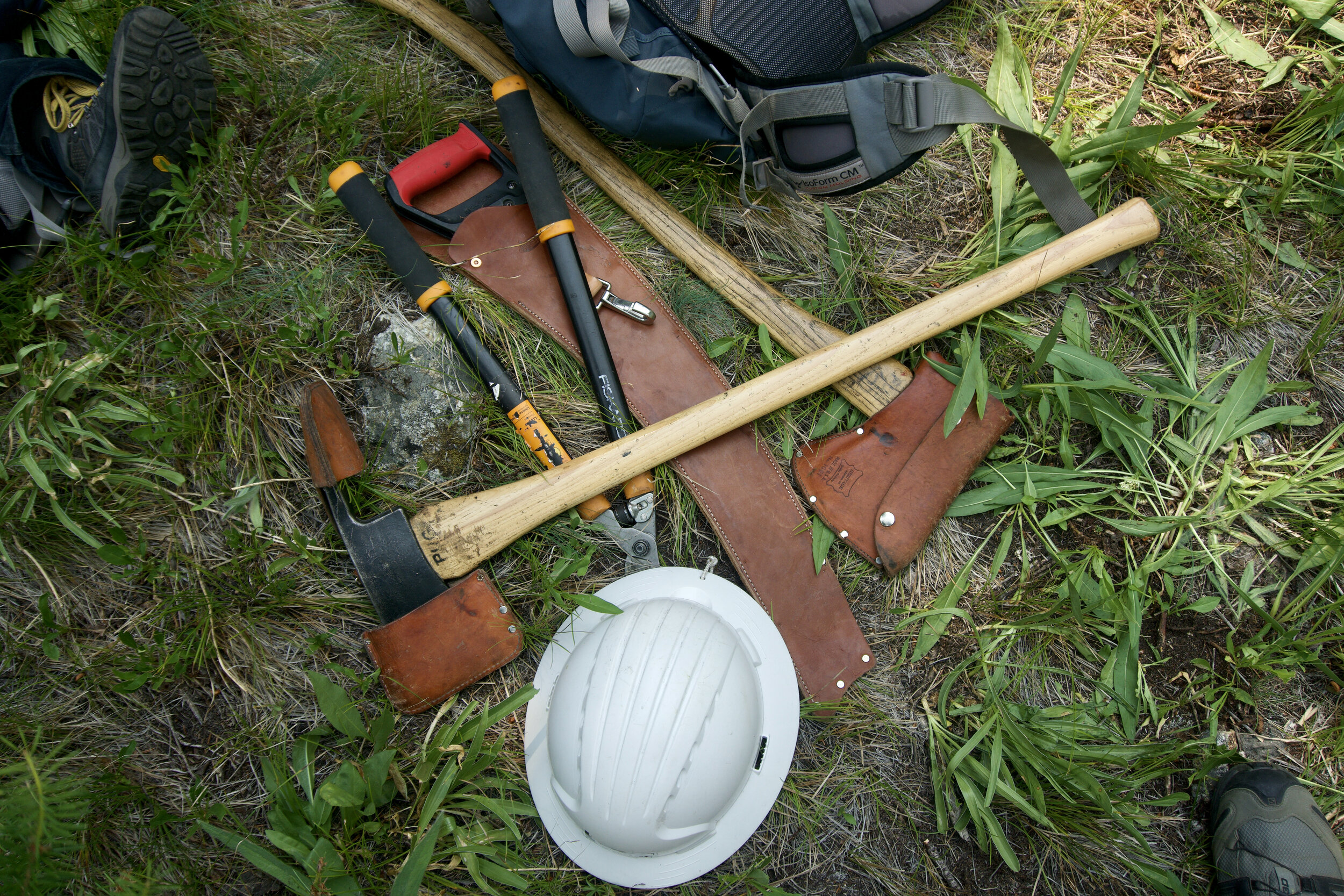
The Pulaski Story
Edward Pulaski
The Pulaski Story
The Pulaski, our namesake and logo, is a half axe, half mattock tool. It chops and cleaves, it excavates and grubs, it is the go-to tool for countless scenarios. Whether you have hefted one or not, odds are you have walked or ridden a trail that was shaped by one. For over a hundred years the pulaski has been the first tool trail-builders reach for when constructing and maintaining new trails and the one tool you will always see firefighters carry into a wildfire.
Edward Pulaski, commonly known as ‘Big Ed’ was an iconic hero of the 1910 Big Burn fires. He began working for the Coeur d’Alene National Forest in 1908 as a Forest Ranger, and in 1910 he directed hundreds of firefighters in daily activities outside of Wallace, Idaho. Throughout his firefighting career he learned that being quick on one’s feet is of the utmost importance.
Why Do We Use Traditional Tools?
The majority of the work we complete is within Wilderness areas. In 1964, Congress passed the Wilderness Act in order to preserve and protect certain lands “in their natural condition” and thus “secure for present and future generations the benefits of wilderness.” One of the legal implications of federally designated wilderness management is that motorized transport and mechanized equipment are prohibited within wilderness boundaries. What that means for us is that we primarily rely on the use of traditional tools including: crosscut saws, pulaskis, shovels, hand saws, and loppers.
Proper use of these tools takes training and practice. PUG volunteers are able to learn how and when to use these tools in order to complete our trail maintenance objectives safely and effectively.

